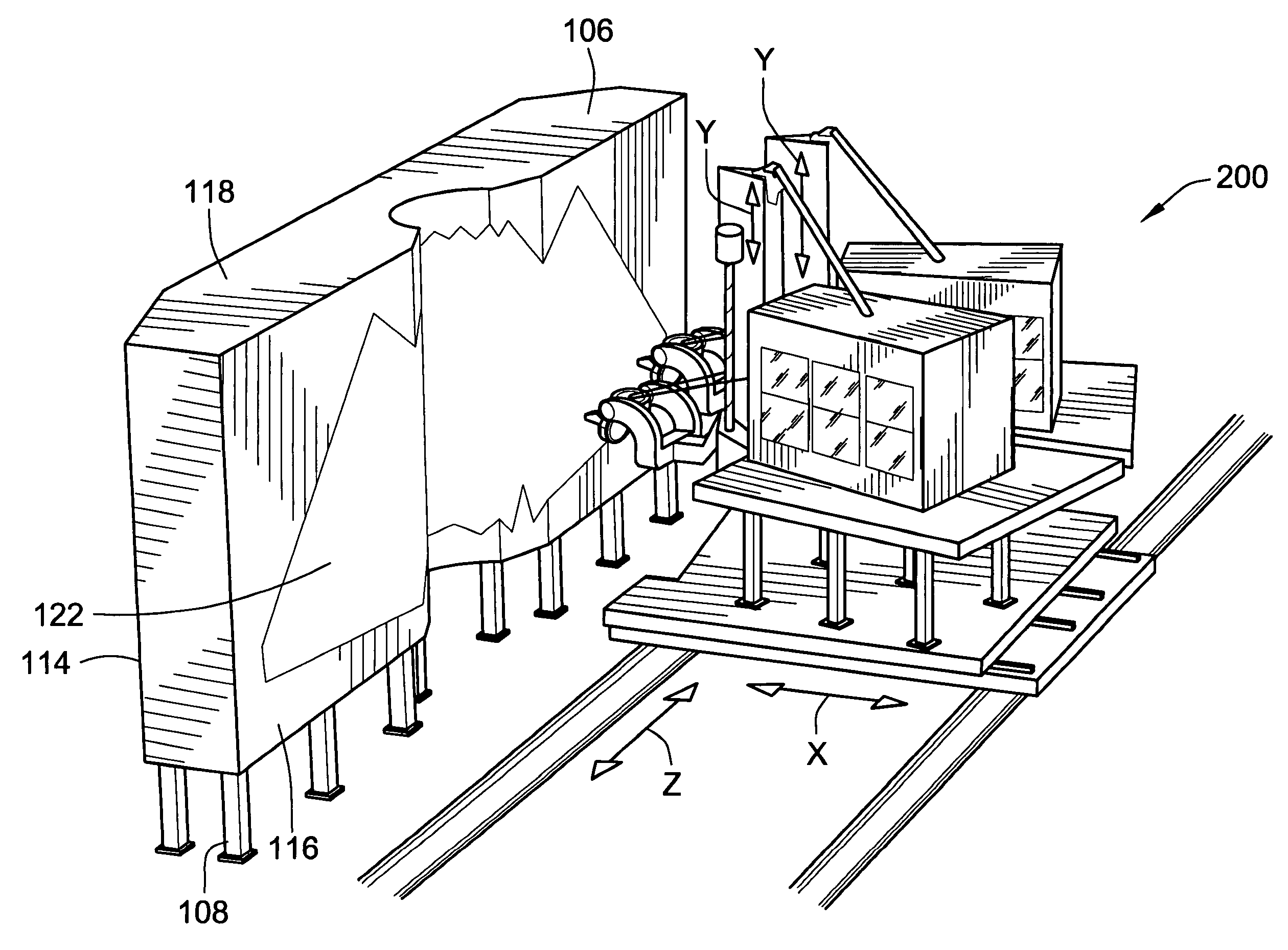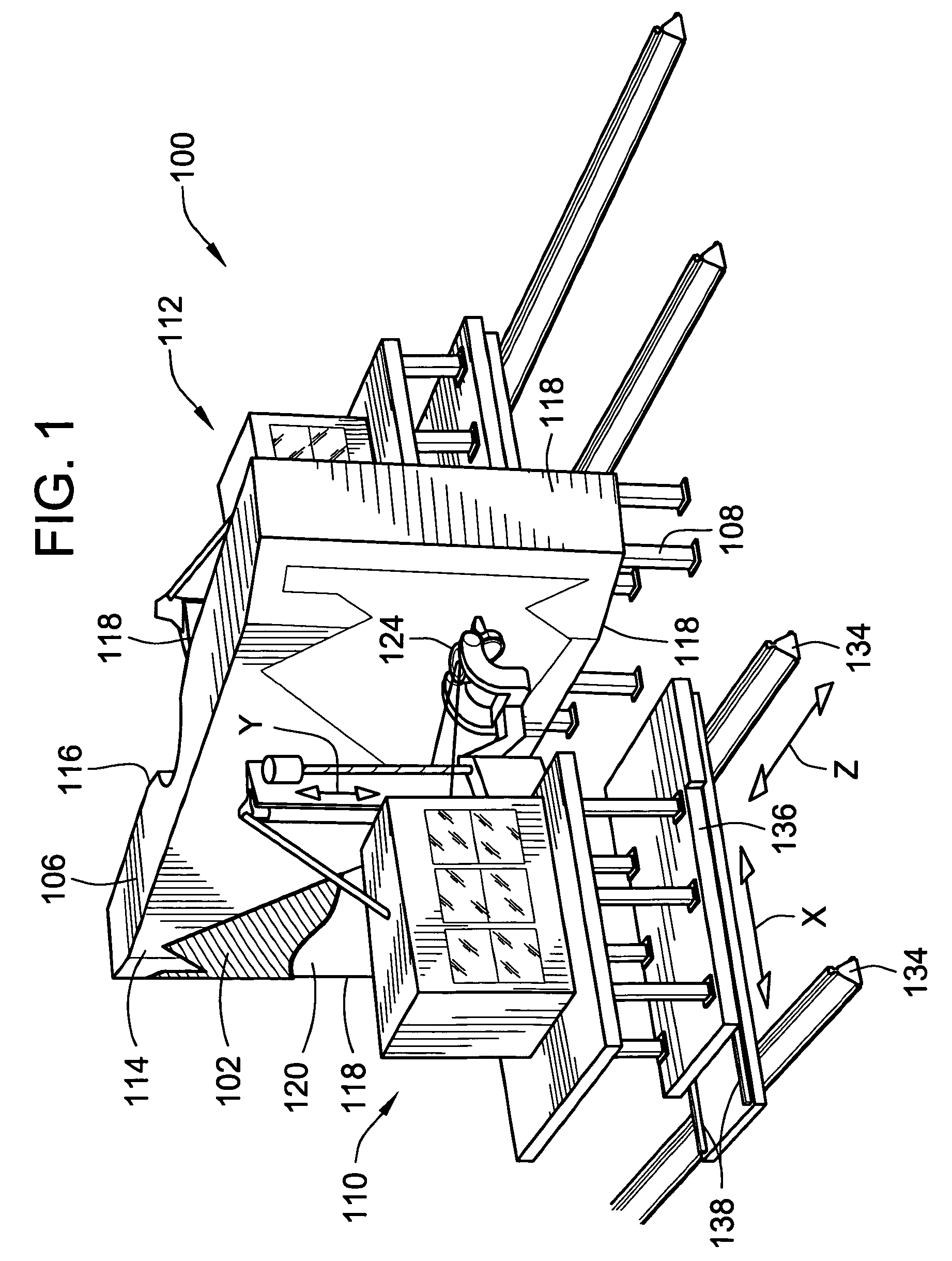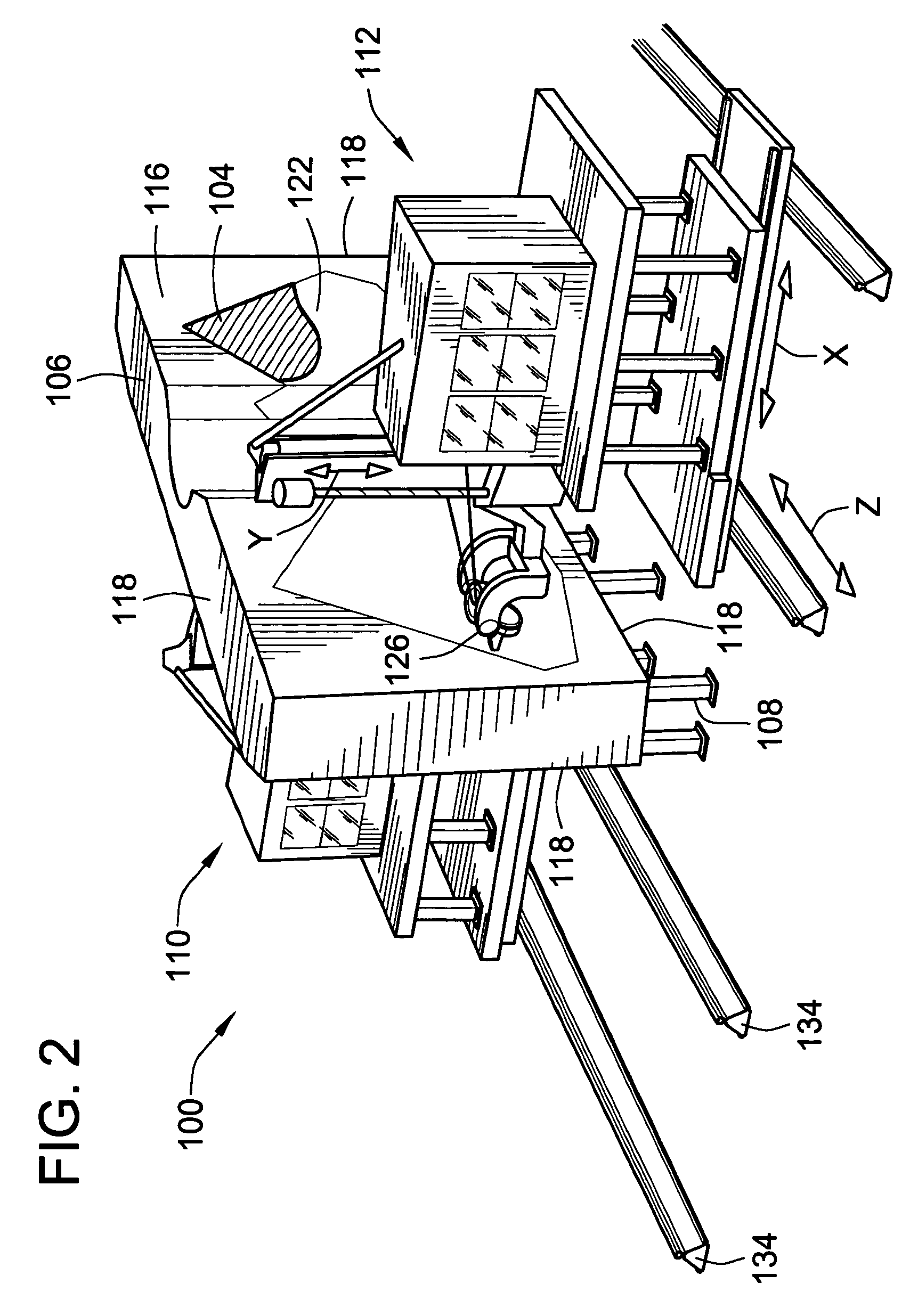Forming a composite structure by filament placement on a tool surface of a tablet
a technology of composite structure and filament, which is applied in the direction of dough shaping, manufacturing tools, food shaping, etc., can solve the problems of increasing cycle times and operating costs of the autoclave portion of the manufacturing process, and increasing the complexity of the mandrel design. , the effect of reducing undesirable and unnecessary costs
- Summary
- Abstract
- Description
- Claims
- Application Information
AI Technical Summary
Benefits of technology
Problems solved by technology
Method used
Image
Examples
Embodiment Construction
[0028]FIGS. 1 and 2 show a first exemplary embodiment of the invention in the form of an apparatus 100 for simultaneously forming the upper and lower skin 102, 104 for an aircraft wing. The apparatus 100 includes a tooling tablet 106 mounted on an indexing tablet mounting structure 108 between a first and a second fiber placement machine 110, 112.
[0029]The tooling tablet 106 includes first and second substantially oppositely facing surfaces 114, 116 thereof, joined around their peripheries by a side surface 18 of the tablet 106. The first and second surfaces 114, 116 of the tooling tablet 106 of the exemplary embodiment, respectively form first and second tool surfaces 120, 122 of the tablet 106. The first and second tool surfaces 120, 122 are each adapted for receiving pre-impregnated and / or pre-impregnated tape from automated placement heads 124, 126, of the first and second fiber placement machines 110, 112 respectively, for formation of the upper and lower wing skins 102, 104 re...
PUM
| Property | Measurement | Unit |
|---|---|---|
| structure | aaaaa | aaaaa |
| angle | aaaaa | aaaaa |
| temperature | aaaaa | aaaaa |
Abstract
Description
Claims
Application Information
 Login to View More
Login to View More - R&D
- Intellectual Property
- Life Sciences
- Materials
- Tech Scout
- Unparalleled Data Quality
- Higher Quality Content
- 60% Fewer Hallucinations
Browse by: Latest US Patents, China's latest patents, Technical Efficacy Thesaurus, Application Domain, Technology Topic, Popular Technical Reports.
© 2025 PatSnap. All rights reserved.Legal|Privacy policy|Modern Slavery Act Transparency Statement|Sitemap|About US| Contact US: help@patsnap.com



